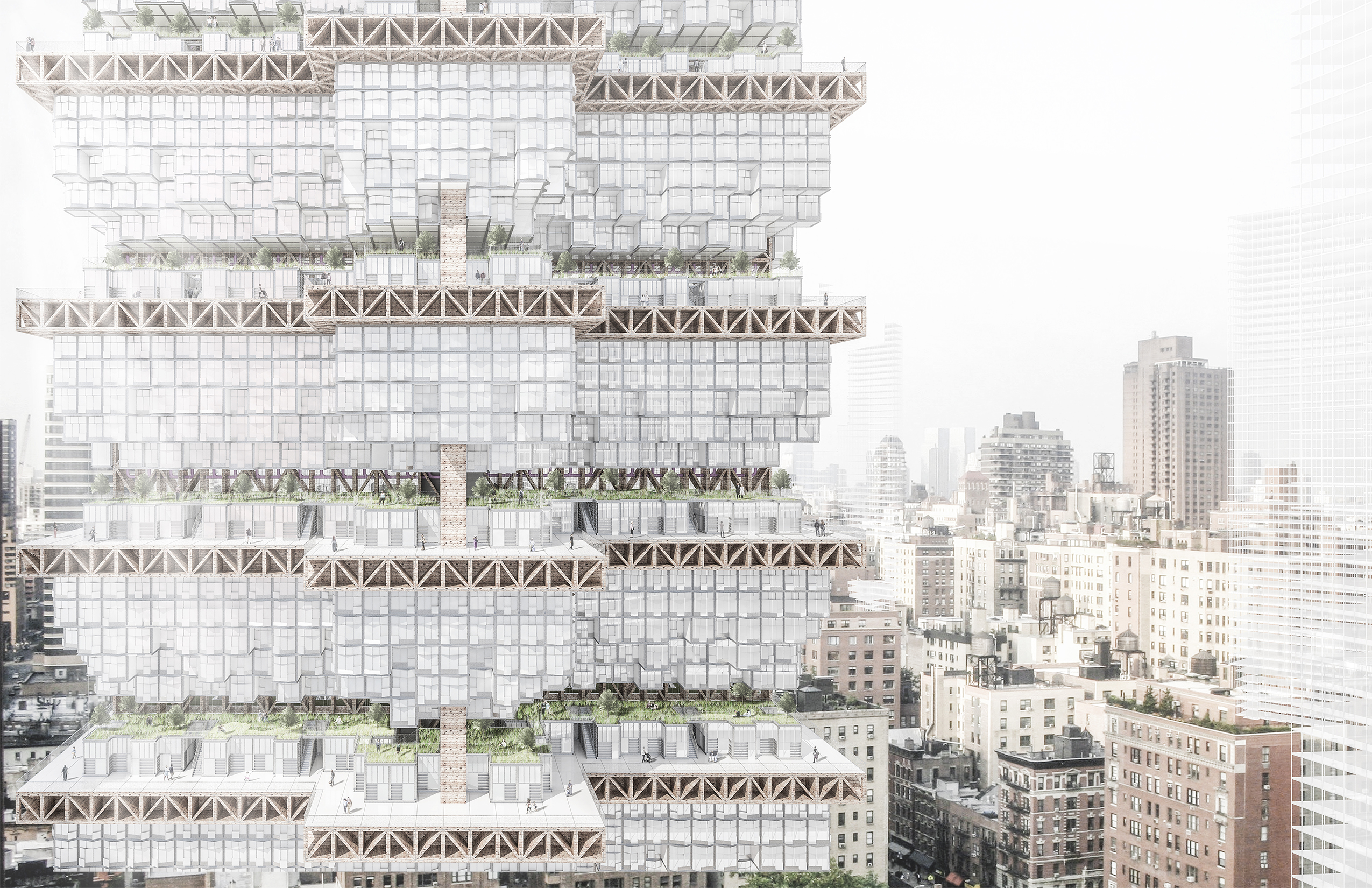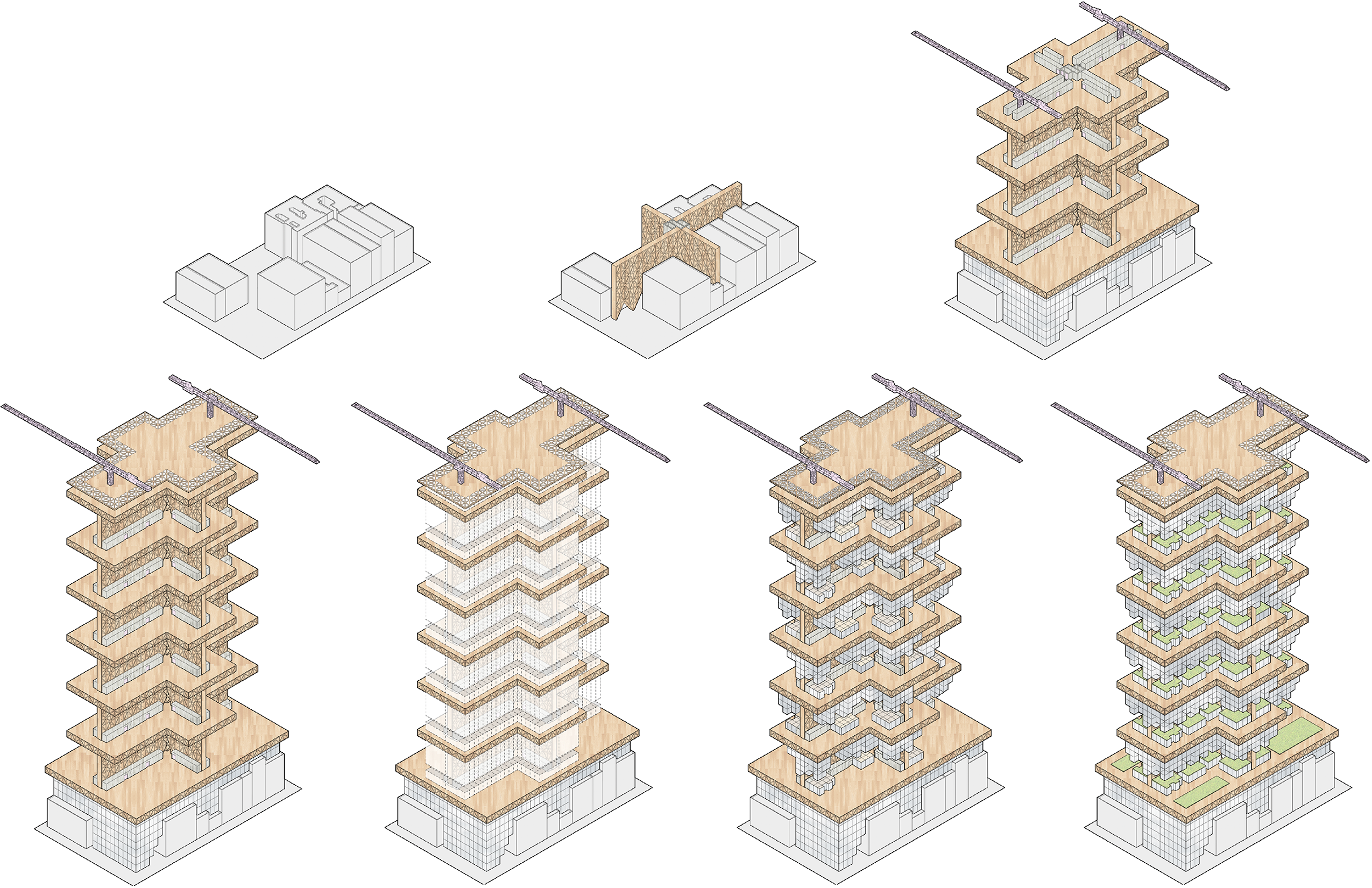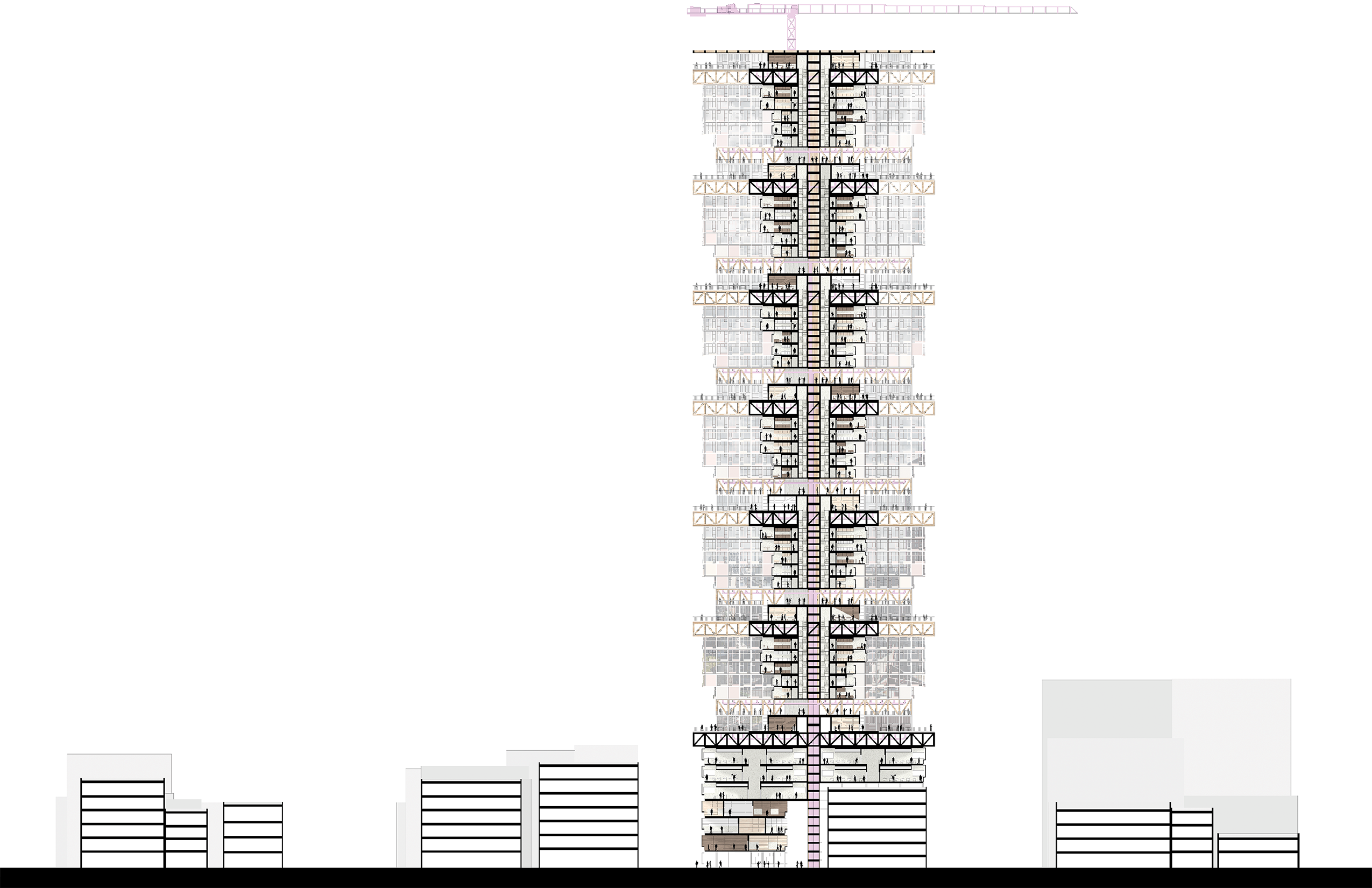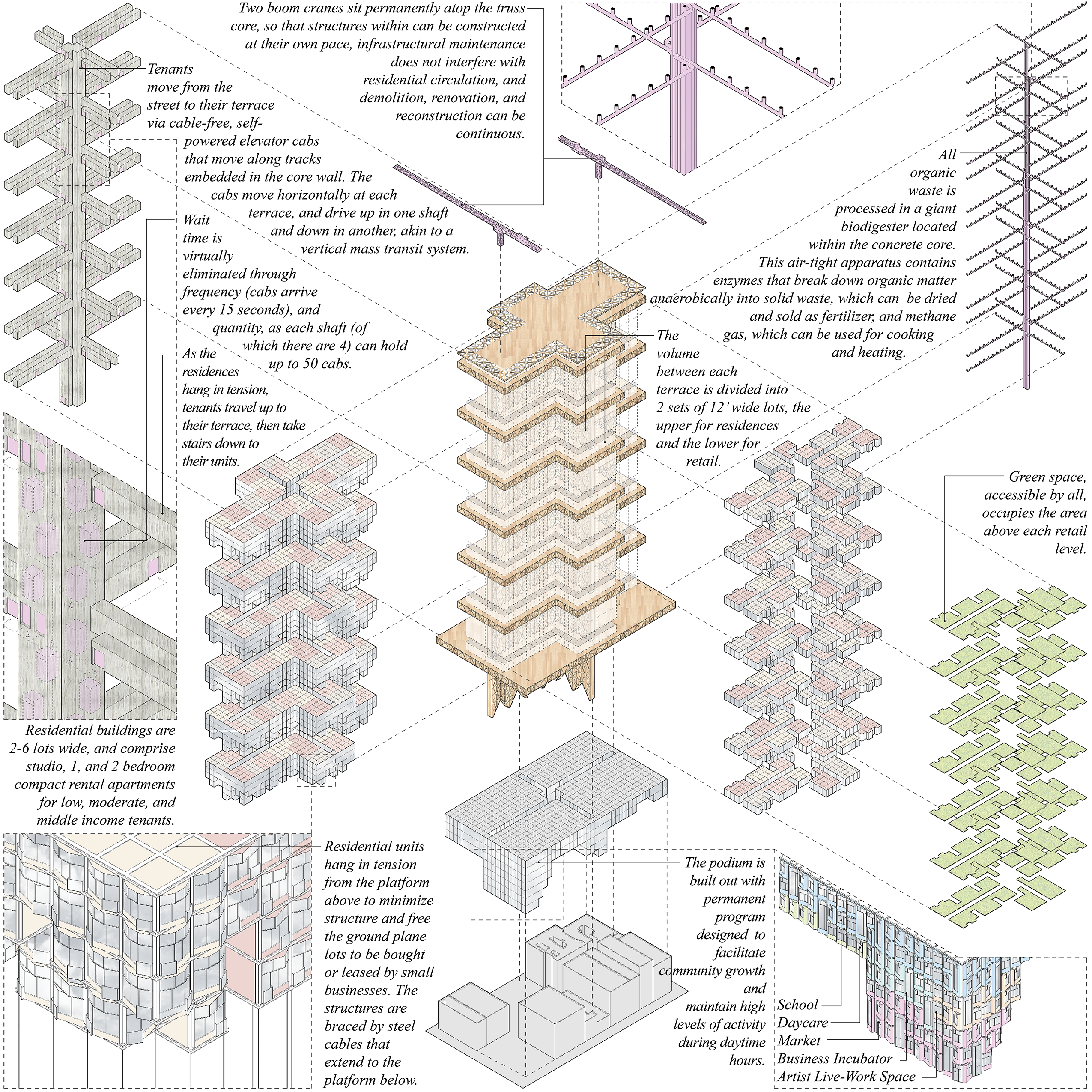Vertical City Block
Proposal for the eVolo Skyscraper Competition
Manhattan, New York, 2017

Because New York is an exceptional and ever-increasingly desirable city to call home for people of every conceivable cultural, economic, and social group, its population is steadily growing at a rate faster than its affordable housing stock, which does not even meet the needs of its current inhabitants. While approximately 70% of the city’s population is single or in a family without children, only 40% of available residences are studios or 1 bedroom spaces. This condition is exacerbated by zoning regulations, property taxes, real estate costs, and construction risk, which drive developers to build a surplus of high-end two and three bedroom condominiums over small, efficient, affordable rental units. Thus, the median rent is $2,900 per month, while the median monthly income is only $4,500. Single, middle-income individuals have little choice but to live in multi-bedroom apartments with roommates, which in turn increases the rent of similar units in the area, pushing lower-income families to peripheral parts of the city, further and further from their places of employment.

While Manhattan’s Chinatown is an extraordinarily rare neighborhood, an enclave that is used by its predominantly immigrant lower and middle-income population as both residential and business center, it is especially vulnerable to these housing and development conditions. Its street life, cuisine, entertainment, authentic culture, and central location make it a target for speculation, while the area’s housing stock is constrained by a zoning overlay that limits its floor area ratio, building heights, setbacks, and materiality to preserve its historical identity. With nowhere new to build, rents are raised and the original population is displaced, disrupting their lives, and forever changing the inherent nature of the place that made it so desirable. The only solution to prevent neighborhoods like Chinatown from becoming unlivable for its residents and undesirable for its visitors is to propose zoning modifications that increase density without destroying culture and character, that promote building up without touching the ground.

To create density, preserve identity, foster community, promote diversity, increase greenery, and generate revenue for further development, we propose the government-led construction of vertical infrastructures that duplicate the urban block vertically many times over.

After rezoning the area to increase the floor area ratio of each building lot from 6.0 to 12.0, the city amasses this extra square footage on a block-by-block basis and redistributes it on extensive terraces that sit above the existing neighborhood, supported by massive cross-laminated timber truss cores placed delicately between buildings at the ground plane. The volume between each terrace is divided into two sets of 12’ by 48’ lots, the upper for residential units, and the lower for small retail fit-outs. The lots are bought by small-scale developers and business owners, and property taxes are paid to the city. Developers may purchase 2-6 continuous lots, but must build in accordance to New York City’s 2025 affordable housing proposal, which mandates all new projects to contain 20% low income, 30% moderate income, and 50% middle income housing, and a minimum of 50% studios or 1 bedroom apartments.

Permanent boom cranes anchored to the top of the truss core allow construction to take place at the pace of the building owners and, once complete, each terrace functions as its own city block. While this proposal creates massive amounts of new housing (our prototype, sitting above the block between Canal, Bowery, Elizabeth, and Hester streets, generates 500,000s.f. alone), residents are not living in a hermetically sealed tower, disconnected from their neighbor or the street, but rather in a meticulous scaled space, matching the height and density of a typical Chinatown block, elevated impossibly high above the ground.
